日本Kozukue住宅
House in Kozukue / Takeshi Hosaka Architects

开放空间/必要空间与剩余空间
这座住宅的业主是一对基督教夫妇和他们的孩子,因此业主有两个需求,首先要有公共空间,这样家人、教会朋友、邻居便可以在这里共同学习,而在周末,他们还可以在这里练习风琴,另外在户外空间之中,家人们则可以享受大自然,但是同时需要保持足够的隐私。
Openness of space / Necessary space and Surplus space
This is a house for a Christian couple and a newborn baby. The client had two wishes for the house: A common room where the family, Christian friends and neighbors can learn the Bible together and the client can practice the organ for Sunday services and outdoor space where both the family and visitors can enjoy natural light and wind while keeping enough privacy.
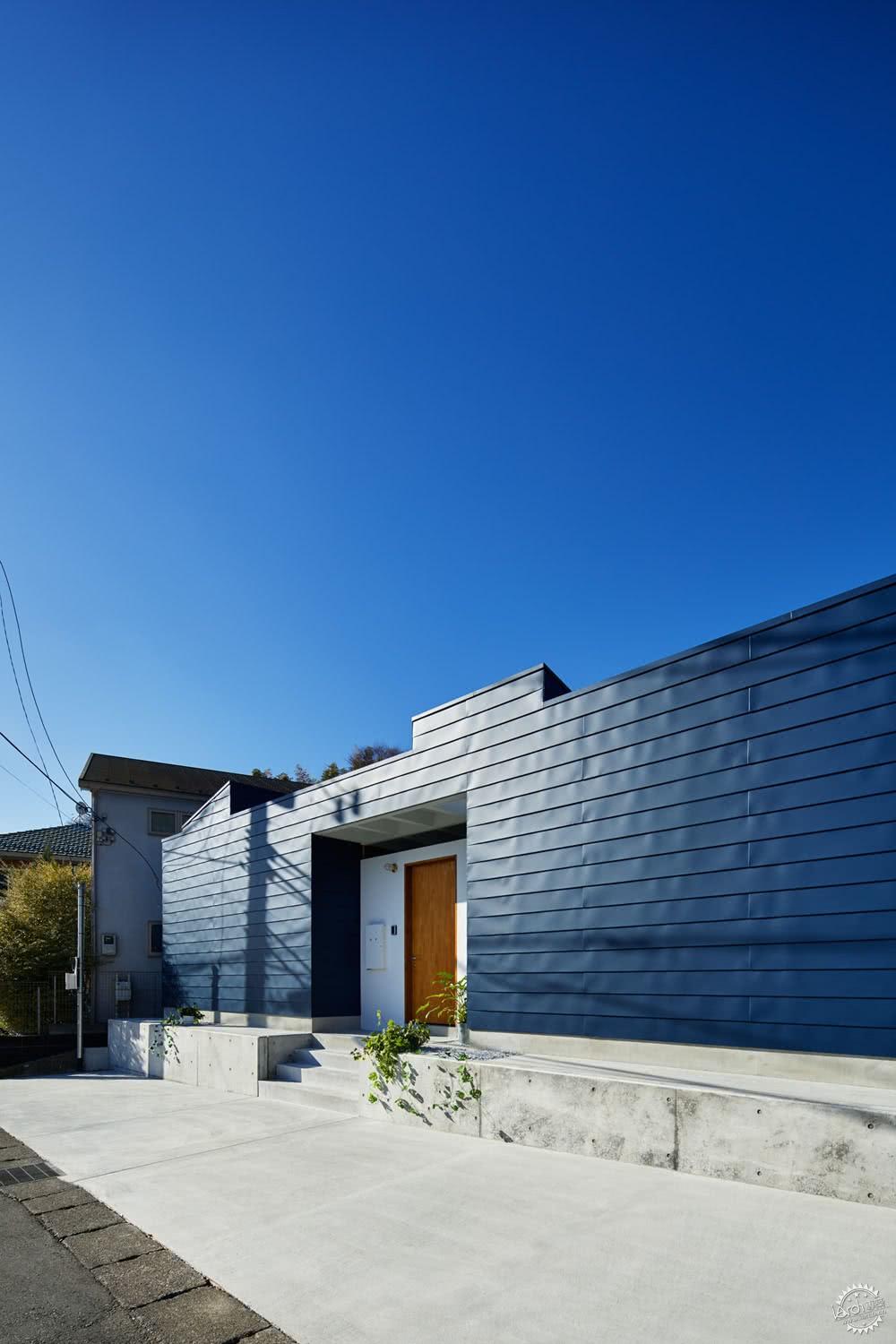
建筑位于日本横滨的一座小山坡上,其场地有着微微的高差,停车场周围环绕着两层住宅与公寓。建筑便坐落于此,场地的其他部分是可以停放5辆车的停车场,同时面对着两侧街道。现有的自动售货机仍然得以保留。
The house is located a gentle sloping corner lot on top of the small mountain in Shin-Yokohama. The site which had been parking lot is surrounded by two story houses and apartments. The house is placed at a part of the site while the other part is used for 5 rented parking lot and 2 private parking space facing to the 2 side streets. Existing vending machine is kept as it had been.

这座住宅较为封闭,周围经常伴随着自动售货机的声响、明亮的车灯、汽车尾气与公园人们的嘈杂等外部影响。因此立面上只保留了入口和小型窗户,这有效地避免了周边环境的影响,但建筑的内部却足够开放,整个空间是街道与城市的延续,其对于环境来说则封闭一些。
The house is as closed as possible against surroundings with the wall which has only an entrance door and minimum small windows on the surface to protect itself against the environment: sound of using the vending machine, car light at night, automobile exhaust and the voice of people using the parking lot, etc. The house has enough open feeling continuing from the street and town while it’s closed against surroundings.



诸如起居室、餐厅、厨房、卧室、儿童用房等必要的居住场所占据了住宅的一半面积,剩余的空间则用作院落。公共休息区的面积最大,建筑师认为这座建筑中需要保留大部分的剩余空间,从而形成欢迎感。这座住宅并非只是个人使用,其甚至还具有一定的神圣性质。
The normally necessary living spaces (living room, dining room, kitchen, bedroom, children's room, etc.,) take only half area in this house. On the other hand, the semi-outdoor courtyard takes the other half area of the house. And the common room is the largest room. I found that a lot of surplus spaces (unnecessary spaces) are needed in this house to create an generosity to accept various visitors and action. While the house is generally personal living place, it is also public and holy place.
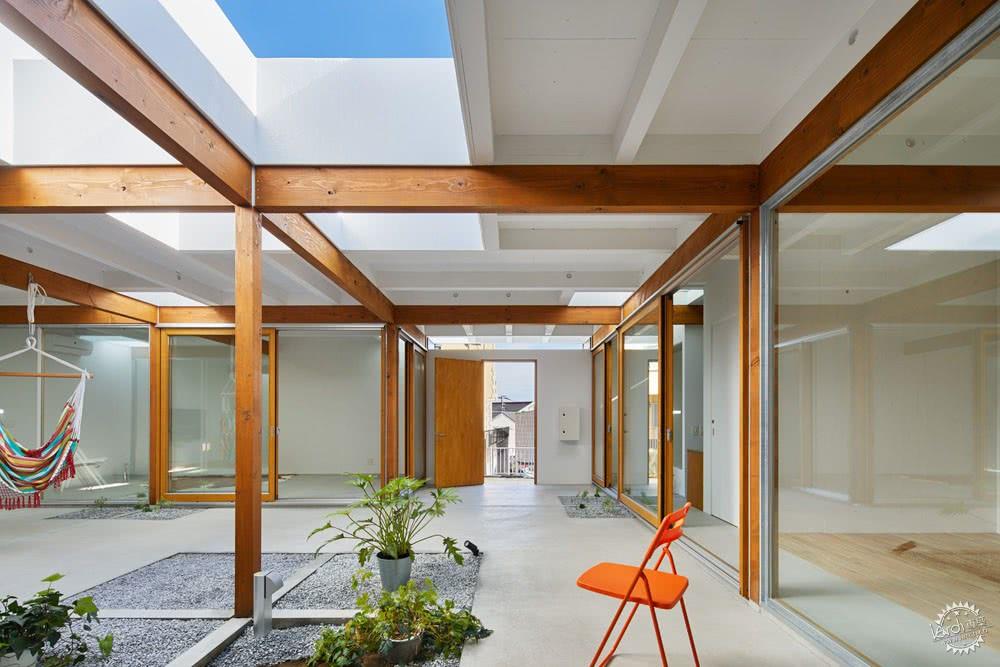


建筑的主要梁柱为咖啡色,而其上方的次梁则是白色,主次梁的交叉处形成11个映射十字架的天窗。
The wooden columns and primary beams which pass over the entire ceiling is painted brown and the secondary beams on them are painted white.11 skylights on the primary beam intersections cast cross-shaped shadows.

当朝向庭院的大型窗户打开时,院落便与室内产生了关联,这模糊了内外空间的界限。因此这些空间并非室内,也并非室外。
When the big windows facing the courtyard is opened, the courtyard gradually connects to the indoor and there is less border between both places. The house turns neither indoor nor outdoor.
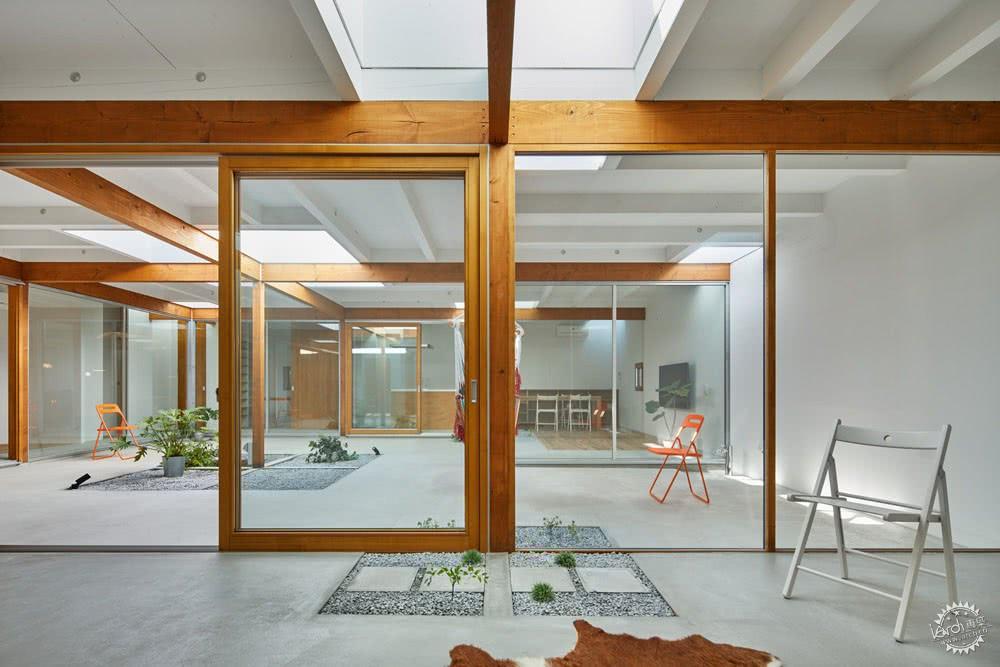

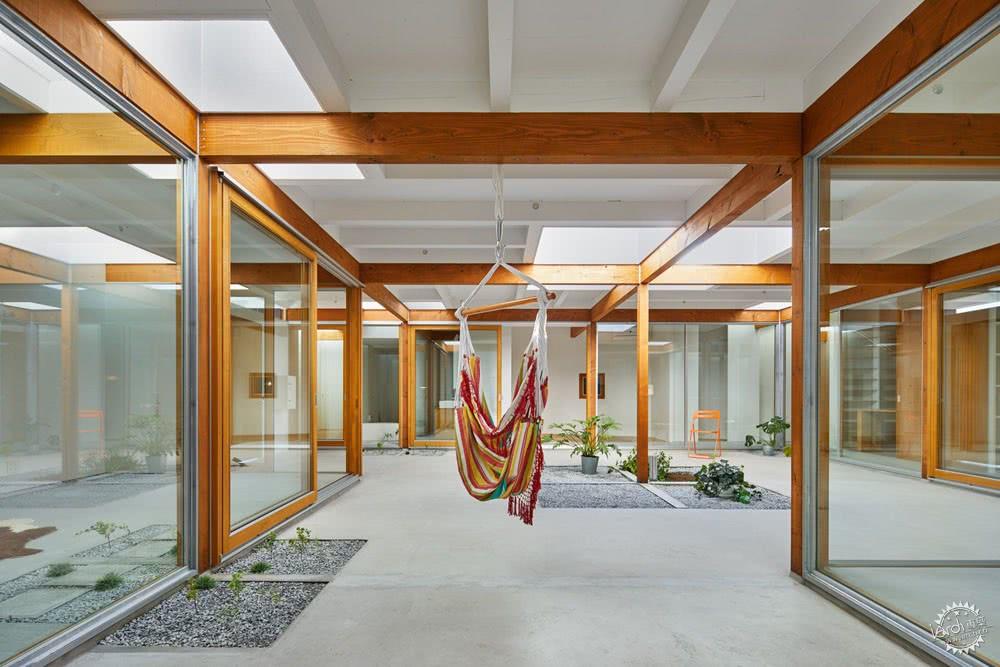
业主可以在剩余空间中阅读、吃零食,这样那些必要空间便得以释放。剩余空间与必要空间相互交织。建筑师认为,这样温和的序列也许才是建筑真正所需要的东西。
The surplus spaces sometimes turn to be used to eat foods or read books like dining room or study room and the necessary spaces are released from being necessary and turn to surplus spaces. Necessary spaces and surplus spaces replace their roles each other from time to time. I would like to believe such gentle sequential spatiality as what architecture should be.
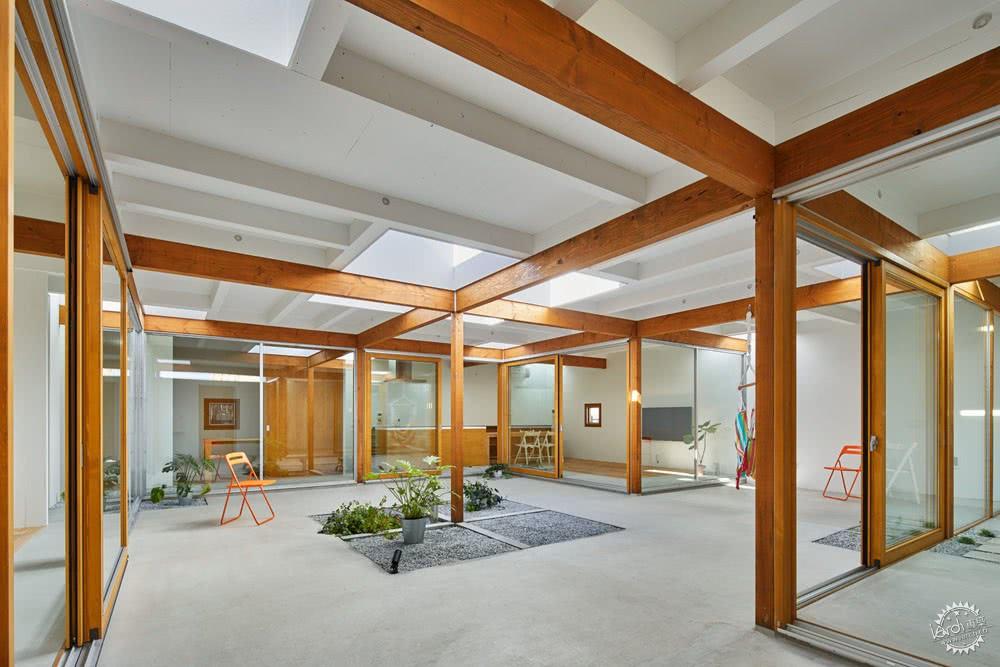


建筑设计:Takeshi Hosaka Architects建筑事务所
地点:日本,横滨
主创建筑师:Takeshi Hosaka
面积:136.0 m2
项目时间:2017年
摄影:Koji Fuji / Nacasa and Partners Inc.
制造商:Panasonic, VELUX, MORI NO MADO, Maxray
结构工程:Kenji Nawa, Nawakenji-M
承包商:TH-1